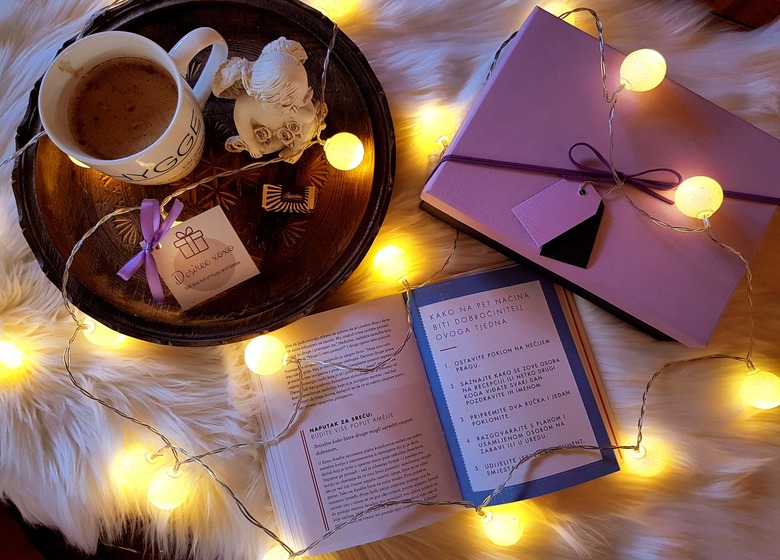Need Of Hygge In Our Lives
Are you fond of curling a blanket, a cup of coffee and a nice book? You may be practicing hygge already more than you believe. Hygge is a Danish culture idea that focuses on living with a sense of comfort, coziness, and peace. It was defined as “creating a cozy atmosphere and enjoying the good stuff in life with good people”. There is a discussion about the correct pronunciation of the term Hygge, either “hue-guh” or “hoo-gah”. But what is so fascinating about this idea is that there are real health advantages to living a lifestyle focused on hygge.
Benefits of Hygge:
Various advantages have been associated with the exercise of hygge. Happiness researchers are constantly finding that Denmark has some of the happiest individuals on Earth that Danes attribute to hygge practice. Feeling enhanced happiness might definitely be a good thing to practice Hygge. But there may also be other mental, physical, and connection advantages.
Physical Benefits
Our body reacts accordingly when we feel secure and calm. In times of perceived risk or threat, our bodies naturally go into a battle, flight, or freeze reaction. An environment in the hygge style encourages an atmosphere of security and comfort in which our minds and bodies can feel more relaxed. There’s much less need for us to scan our environment for threats in a space like this.
Possible physical benefits may include:
- Improvement in sleep
- Fewer spikes of cortisol (stress hormone)
- Weight regulation
- Improvement in self-care practice
- Reduced need for unhealthy behaviors such as alcohol and drugs
Social Benefits:
We are more likely to reach out to create and nurture connections with others when we feel comfortable and emotionally secure. There is a focus on linking with family, friends and loved ones in a hygge-focused lifestyle. Spending time with those most significant to us creates a feeling of belonging and connection that research continues to show effects on our health and well-being. When linked with others we feel more comfortable, we feel secure to take risks, and we are more open to practicing vulnerability with others, all things that can be facilitated in a hygge-style living room.
Possible social benefits may include:
- Enhance trust
- Enhance intimacy
- Comfort and safety feeling
- New social connections
- Focus on being together
- Improved relationships
- Less dependence on social media
Emotional Benefits:
Hygge decor is intended to foster in the living space a sense of calm and peace. Since we create a sense of our experiences and environment through the use of sight, sound, touch, taste, and smell. It may come as no surprise that building a comfortable living space would assist us to feel less anxious. And encourage a feeling of emotional well-being and security. This feeling of comfort and safety can make it easier for us and those who share the space with us to let down our guards and be more present and open to connecting with each other.
Possible emotional benefits may include:
- Less depression, less anxiety
- Self-worth feeling increase
- Higher optimism
- Reduced stress
- Greater sense of awareness
- Enhanced compassion for oneself
- Increased gratitude practice
How to make use of Hygge in your life
Most of us would like to feel pleased, peaceful and comfortable, but do we have to relocate to Denmark to fully adopt the lifestyle of Hygge? No! We can integrate hygge components into our daily life and our living spaces in many simple ways. Implementing some of these components can begin to bring you in your everyday lives that sense of peace, connection, and comfort.
1. Always adjust your lighting accordingly, preferably by using candles:
Lighting is an important component of creating in the living room a feeling of hygge. Using warm, soft white light creates an inviting and comfortable space compared to harsh, bright white bulbs or fluorescent lighting. The greater the lumens of the bulb, the brighter the light. The more light. You may also choose to install a dimmer to have the options to illuminate the space as you wish.
Candles are a characteristic light that is used in space in the hygge style. The candles inherently create a warm, smooth light, and so much for this style a feeling of relaxation and comfort. If your live-room has too much risk owing to pets or kids with open-flamed candles, you can choose to use LED candles.
2. Add some texture:
Hygge is all about soft and cozy things. To create a warm, inviting space, you’ll want to incorporate soft accessories such as blankets, throws, pillows, and rugs. The soft texture is soothing, allowing us to feel soothed when our anxieties are high. Soft textures also allow others to feel secure in a room, calming concerns and enabling individuals to open up more with each other. In this space, conversations may feel calmer and more open rather than rushed or pressured.
3. Decor:
Using accessories such as wood elements, indoor plants and simple, the clean decoration can create a calming atmosphere. Try to use unique meaning items such as family and loved one’s images. You can put picture albums with travel images or experiences you’ve shared with others on the coffee table. Hygge is about warmth and connection, so use decor to facilitate discussion and attract individuals.
4. Warmth:
Warmth is not so much about the temperature as an emotional heat sensation. A fireplace is a characteristic feature of a hygge-style room, but for everyone, this is not an alternative. Anything you can do to create such an inviting, warm room is going to be a plus. Candles and displays using accent lighting would be examples of this. In certain parts of the home, you can also use tiny string lamps to assist create the inviting warmth a fireplace would offer the room.
5. Color:
An important aspect of setting up a comfortable stage for yourself and your guests is the colors selected for a living room. Neutral colors, especially whites, soft whites, blushes, and soft browns, are often selected. In fact, the use of neutral colors on the wall also helps to calm your mind, which suits this specific lifestyle. Hygge is about calm, smooth, comfortable and relaxing. In other words, for living and spending time with close friends and loved ones, hygge encourages an anti-anxiety atmosphere.
6. Activity:
Activities in the hygge style typically require stuff that assists us to feel peaceful, comfortable and linked to others. House gatherings with friends are the main activity. Gatherings focus on the association, not the presentation, with others. An official black-tie affair is not needed. Indeed, living in hygge would suggest the contrary. Gatherings should give a casual, inviting room and provide a place for individuals to feel comfortable and concentrate on interactions and connect with each other. Consider having friends or neighbors over for coffee or hosting a book night with a game night with colleagues.
7. People:
It is at the core of hygge-style living to experience meaningful link with others. The objective is to be present and to communicate with the individuals around you. We allow ourselves and others to experience a feeling of belonging in nurturing these relationships. If we belong to that, we feel emotional protection. In turn, emotional security creates a favorable social experience and enables us to feel the physical advantage of ease, calmness, and connection.
Hygge has everything to do with convenience, peace, and attachment. Implementing some of these components will benefit our emotional health, physical health, and social health. Incorporating some of these concepts into your living setting can provide you with a relaxing space, inviting others, and good for your well-being and health.













